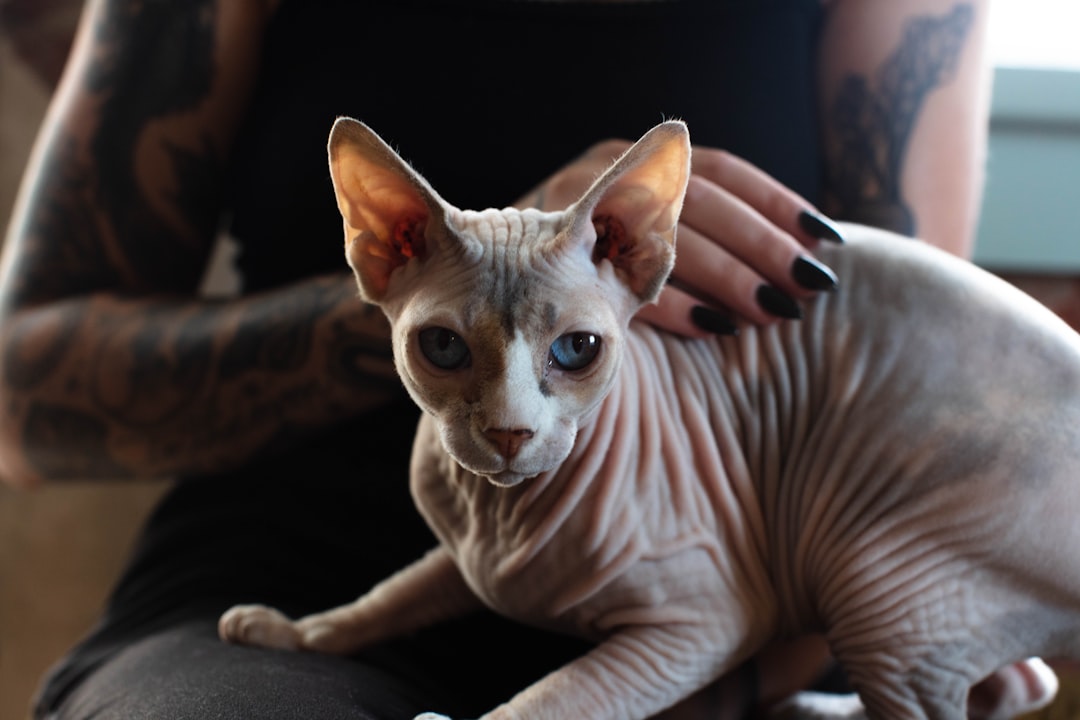Choosing between a male or female cat can significantly influence your pet ownership experience. Each gender comes with distinct personality traits, health considerations, and behavioral differences. Understanding these aspects is essential, as they can directly affect your home environment and the bond you form with your feline friend. By exploring the unique characteristics of male and female cats, you can make an informed decision that aligns with your lifestyle and preferences. This comprehensive guide will help you determine which option—male or female cat—is the best choice for you and your family.
Understanding the Differences Between Male and Female Cats
When contemplating whether a male or female cat is the best choice, it’s essential to understand some key differences. Here’s a breakdown of their primary distinctions:
Size: Typically, male cats are larger than females. Adult males usually weigh between 11-15 pounds, while females range from 8-12 pounds.
Temperament:
- Male Cats: Often exhibit more playful and assertive behaviors. They may be more social and thrive on attention.
- Female Cats: Generally tend to be more independent and nurturing. They can be affectionate but sometimes prefer solitude.
Marking Behavior:
- Males are more prone to spray to mark territory, especially if unneutered.
- Females may also mark, but this behavior is less common.
Reproductive Behavior: Intact males typically display strong mating instincts, while females may go into heat, leading to vocalizations and restlessness.
Understanding these distinctions can help you make an informed choice between a male or female cat that fits your lifestyle and environment better.

Personality Traits: Male vs. Female Cats
When choosing between a male or female cat, understanding their personality traits can significantly influence your decision. Typically, both genders can offer loving companionship, but they exhibit different behavioral tendencies.
Male Cats:
- Affectionate: Male cats often showcase a more loving and playful demeanor, often thriving on human interaction.
- Territorial: They can display territorial behavior, especially if unneutered. This may lead to marking territory.
- Playful and Energetic: Male cats generally show higher energy levels and enjoy more vigorous playtime.
Female Cats:
- Independent: Female cats tend to be more independent and may enjoy alone time without feeling neglected.
- Gentler: They often exhibit a calmer and quieter temperament, making them easier to manage in quieter households.
- Maternal Instinct: Female cats may display nurturing behaviors, especially if they have been spayed, often enjoying the comfort of their own space.
In summary, while both a male or female cat can be a wonderful addition to your home, their differing personalities can cater to specific lifestyles. Consider these traits when making your choice!
Health Considerations for Male and Female Cats
When weighing the decision between a male or female cat, health considerations play a crucial role. Understanding the potential health issues that could arise will help you make an informed choice.
Common Health Issues:
Male Cats:
- Urinary Blockage: Males are more prone to urinary issues, particularly if they’re not neutered. This can require emergency veterinary care.
- Feline Lower Urinary Tract Disease (FLUTD): This condition is common in male cats due to narrower urethras.
Female Cats:
- Mammary Tumors: Unspayed female cats have a higher risk of developing mammary cancer.
- Pyometra: This life-threatening infection of the uterus occurs in unspayed females, necessitating immediate veterinary attention.
Lifespan:
- Studies show that both male and female cats can live long, healthy lives, often reaching 15 years or more if spayed or neutered.
In summary, whether you choose a male or female cat, consider their potential health challenges and prioritize responsible spaying or neutering. Your choice can significantly impact their overall health and well-being.
Spaying and Neutering: What You Need to Know
When considering a male or female cat, spaying and neutering are crucial steps. These procedures not only control the pet population but also influence behavior and health.
Spaying (Female Cats)
- Definition: Surgical removal of ovaries and uterus.
- Benefits:
- Reduces the risk of uterine infections and breast tumors.
- Eliminates heat cycles, making female cats calmer.
Neutering (Male Cats)
- Definition: Surgical removal of testicles.
- Benefits:
- Decreases aggression and roaming behavior.
- Lowers the risk of testicular cancer and prostate issues.
Key Considerations
- Timing: Ideally, schedule these procedures between 4 to 6 months of age.
- Cost: While prices vary, spaying is generally more expensive than neutering.
- Recovery Time: Both procedures usually require minimal recovery time, allowing pets to return to their routine quickly.
Ultimately, whether you choose a male or female cat, spaying and neutering plays a significant role in ensuring your pet’s health and well-being.

Behavioral Differences in Male and Female Cats
When deciding between a male or female cat, it’s essential to explore their behavioral traits, as they can significantly differ. Here are some key distinctions:
Male Cats:
- Affectionate: Typically, male cats display more affectionate behaviors, often seeking out human interaction.
- Playful: Males tend to be more boisterous and playful, engaging in rough play more frequently.
- Territorial: They can be more territorial, marking their space with scent in various ways.
Female Cats:
- Independent: Female cats often exhibit a more independent nature, willing to enjoy their solitude.
- Nurturing: Females may display nurturing behaviors, especially if they have been spayed or have had kittens.
- Less Aggressive: They are usually less likely to exhibit aggressive behaviors compared to their male counterparts.
Quick Comparison:
| Trait | Male Cats | Female Cats |
|---|---|---|
| Affectionate | ✓ More | ✓ Moderate |
| Playfulness | ✓ Very playful | ✓ Less intense |
| Territorial | ✓ More dominant | ✓ Less territorial |
| Independence | ✓ Less | ✓ More |
| Nurturing Behavior | ✓ Rare | ✓ More common |
Ultimately, whether you choose a male or female cat may influence your experience as a pet owner. Consider these behavioral differences to find the best match for your lifestyle.
Ideal Living Environments for Each Gender
When considering whether to adopt a male or female cat, it’s essential to evaluate the ideal living environments for both genders. Understanding these differences can help you ensure a harmonious home.
Male Cats:
- Typically more territorial and may require more space.
- They thrive in environments where they can explore and play, often enjoying outdoor access.
- Male cats may engage in more rough-and-tumble play, so cat-proofing your home is essential.
Female Cats:
- Generally, female cats are more adaptable and may do well in smaller living spaces.
- They often prefer a quieter environment and may appreciate cozy spots to retreat.
- Females usually exhibit nurturing behaviors, so providing them with soft bedding or hiding places can create a comforting space.
Summary Comparison
| Aspect | Male Cats | Female Cats |
|---|---|---|
| Space Needed | More space, often enjoy outdoors | Smaller space, adaptable to indoor life |
| Play Style | Rougher, more energetic | Calmer, nurturing behaviors |
| Ideal Environment | Explorative, needs stimulation | Quiet, cozy spots preferred |
In conclusion, knowing the male or female cat differences will guide your choice and help create a comfortable environment tailored to your pet’s needs. Choose wisely to foster a happy and loving home together!
Cost of Care: Comparing Male and Female Cats
When evaluating the cost of care for your future feline companion, understanding the differences between a male or female cat can help inform your decision. While many factors contribute to expenses, here’s a comparison of some key areas:
Food:
- Male cats generally require more food due to their larger size, which may lead to a slight increase in monthly expenses.
- Female cats often consume less, thus resulting in lower food costs.
Health Care:
- Spaying female cats tends to be more expensive than neutering male cats. Costs can vary significantly, depending on local veterinary prices.
- Regular check-ups and vaccines remain consistent regardless of gender.
Litter and Supplies:
- Litter usage may vary based on size; larger males tend to use more than females.
- Other supplies such as toys and scratching posts usually have similar costs for both genders.
In summary, while male or female cat care costs can be comparable, slight differences can influence your budgeting choices. Consider these factors when deciding on the best fit for your lifestyle.

Making the Final Decision: Choosing the Right Cat for You
When it comes to choosing a male or female cat, several factors play a crucial role in your decision-making process. Here are some key considerations to help guide you:
Lifestyle: Assess your living situation. Male cats may display more territorial behavior, whereas female cats tend to be more nurturing.
Personality Preferences: Do you prefer a more playful, energetic companion (often found in male cats), or a calmer, more affectionate presence (often seen in female cats)?
Long-term Commitment: Consider the lifespan and care aspects. Both male and female cats require love, attention, and healthcare throughout their lives.
Factor Male Cats Female Cats Personality Generally playful Usually gentle Territorial Behavior More territorial Less territorial Care Requirements Similar needs Similar needs
Ultimately, whether you choose a male or female cat should align with your personal preferences, lifestyle, and the specific traits you seek in a feline companion. Reflect on your needs, and trust your instincts to make the right choice.
Frequently Asked Questions
What are the differences in behavior between male and female cats?
Male and female cats exhibit some behavioral differences that may influence your decision. Males tend to be more territorial, engaging in marking behavior and possibly exhibiting dominance. They are often more playful and social, actively seeking interaction with humans and other pets. On the other hand, female cats are usually more reserved, often forming stronger bonds with their owners. They may also display nurturing behaviors, especially when they are in heat or when caring for kittens, which can affect their temperament and interactions.
Do male and female cats have different health concerns?
Yes, male and female cats can be prone to different health issues. Male cats, especially those that are not neutered, may experience issues related to urinary blockages since they have narrower urethras. They are also at increased risk for certain behavioral problems related to territory marking. Female cats can face reproductive health issues such as pyometra (a severe uterine infection) and mammary tumors if not spayed. It’s important to discuss these potential health issues with a veterinarian when considering the adoption of a cat.
How does spaying or neutering affect behavior?
Spaying female cats and neutering male cats can significantly alter their behavior. Neutered males often become less aggressive and less inclined to roam, leading to fewer territorial disputes. They are also generally more affectionate and sociable, making them better companions. Spayed females will not go into heat, thus avoiding the related behaviors such as yowling or restlessness aimed at attracting mates. Both procedures contribute to a calmer demeanor, making it easier to integrate them into a household setting.
Which gender is better suited for families with children?
Both male and female cats can make excellent family pets, but the best choice may depend on the individual cat’s personality. Generally, male cats are often more playful and can tolerate rough handling, which is common with kids. However, some female cats can be very affectionate and gentle, making them just as good for families. It’s essential to spend time with both genders and observe their behavior, as temperament varies widely among individual cats regardless of gender.



